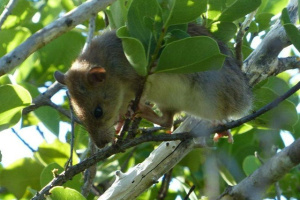Seychelles Islands Foundation plans feasibility study to eradicate cats and rats from Aldabra
Conservation |Author: Sharon Ernesta | January 8, 2024, Monday @ 11:01| 27743 views
This first phase, which will take three years, will include rat and cat surveys. (Seychelles Islands Foundation)
(Seychelles News Agency) - The Seychelles Islands Foundation (SIF) is planning to undertake a feasibility study on eradicating cats and rats on the Aldabra Atoll, a UNESCO World Heritage site.
The SIF is hoping to collect vital information that will help to decide if eradication is possible and how it should be done. This first phase, which will take three years, will include rat and cat surveys and research into their behaviour and habitat to understand how rats and cats are using the island and how they can be controlled.
Another component of the exercise will be trials of different bait formulations, the most effective approach for delivering bait while minimising the impact on native species. Results will also inform the eradication costing plan and the operational plan for the eradication if it is deemed feasible.
Cat and rat threat
The atoll, the largest in the world, is home to the endemic Aldabra giant land tortoise, with an estimated population of more than 150,000, as well as to several other endemic species of birds, lizards, and insects.
The presence of cats and rats has been responsible for the extinction of species from the island.
SIF told SNA that despite its high biodiversity and protection status, Aldabra's ecosystem has been hugely impacted by rats and cats that are not native to its islands as the rats were introduced accidentally. Cats were probably introduced on purpose to control rats.
"However, instead of eating the rats, the cats prey on native and endemic species, including seabirds, land birds, small reptiles like skinks and geckos, invertebrates like beetles, larvae of butterflies and moths, snails and crabs, and turtle and tortoise hatchlings," according to SIF.
The Foundation explained that the cats have caused the local extinction of the Aldabra rail - the last flightless bird in the Indian Ocean - on every island where they both occurred.
Rails have since been reintroduced to Picard Island, one of the four atolls of the Aldabra, where there are now no cats. It remains absent from Aldabra's largest island of Grande Terre, which still has cats.
"It would only take one cat reaching an island with rails to wipe out a large proportion of the population, possibly all of them, leading to the potential extinction of this unique bird," added SIF.
The other menace to the atoll's ecosystem is rats that eat almost everything they come across and have an enormous impact on Aldabra's native ecosystem.
Eradication planning – baiting methods
The SIF said the negative impacts of rats and cats on Aldabra's ecosystem have been known to scientists for a long time, and so the eradication has been listed as a priority action in the two most recent management plans.
Though deemed crucial for the protection of the atoll, the eradication was delayed as the Foundation was faced with several challenges.
"There is no point conducting a very expensive eradication if there are not extremely tight biosecurity measures to prevent re-invasion. SIF has developed a world-class biosecurity system for Aldabra, culminating in a decade of work, research, and additional projects. With this in place SIF is confident we can proceed with an eradication with minimal risk of re-invasion," said the organisation.
Furthermore, the vast mangrove forests on Aldabra pose the biggest challenge for successful eradication because these habitats are tidally inundated, and rats thrive in mangroves because there is so much food for them.
"Traditional baiting methods of dropping pellets from helicopters will not work for mangroves, but methods have been developed to tackle mangroves, and teams around the world are developing new ways to bait large areas of mangroves," said SIF.
The Aldabra Atoll was designated a UNESCO World Heritage Site in December 1982. It is one of the two heritage sites managed by the Seychelles Island Foundation (SIF). The other is the Vallee de Mai on Praslin, the second most populated island of the archipelago in the western Indian Ocean.
Back
